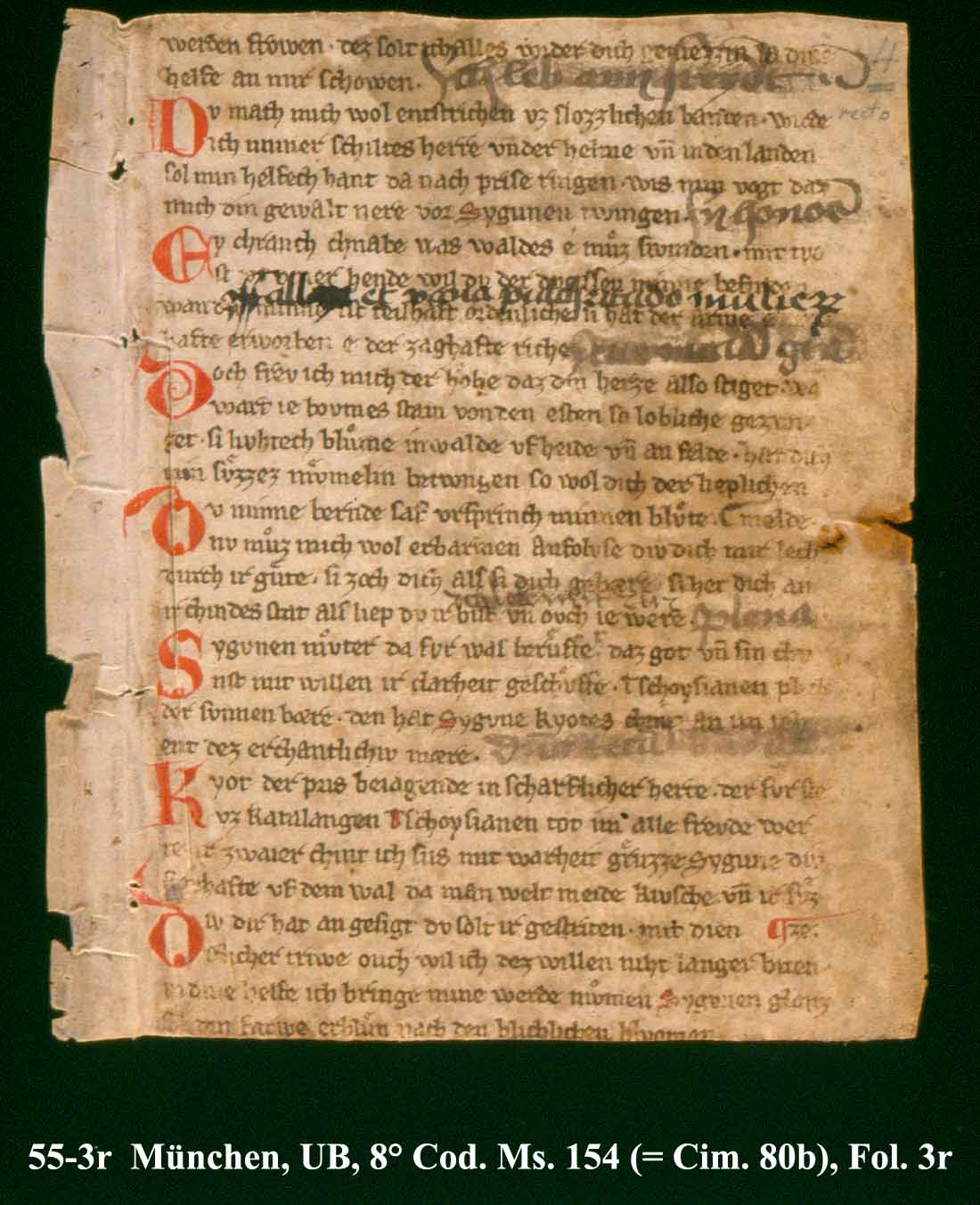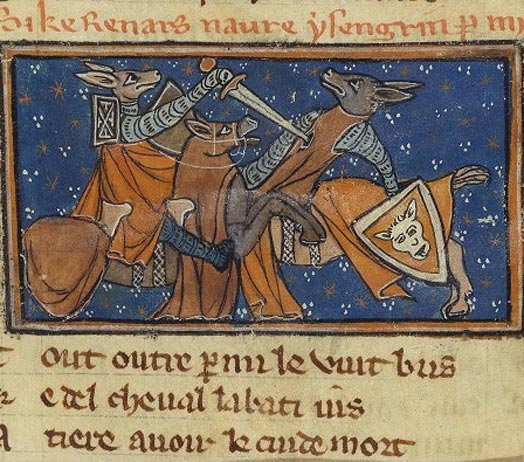|
Ernst Martin
Ernst Eduard Martin (5 May 1841, Jena – 13 August 1910, Strasbourg) was a German philologist of Romance and Germanic studies. He was the son of gynecologist Eduard Arnold Martin (1809–1875). He studied at the universities of Jena, Berlin and Bonn, obtaining his habilitation in 1866 at the University of Heidelberg. Later on, he worked as a professor at the universities of Freiburg, Prague (from 1874) and Strasbourg (from 1877). Beginning in 1883, with Wilhelm Wiegand, he was editor of the journal "''Strassburger studien; Zeitschrift für geschichte, sprache und litteratur des Elsasses''". Selected works * ''Bermerkungen zur Kudrun'', 1867 – Remarks about Kudrun. * ''Goethe in Strassburg'', 1871 – Goethe in Strassburg. * ''Kudrun'' (1872, second edition 1902). * ''Fergus; roman von Guillaume le Clerc'', 1872 – Guillaume le Clerc's ''Roman de Fergus''. * ''Mittelhochdeutsche Grammatik'' (12th edition, 1892) – Middle High German grammar. * ''Das nie ... [...More Info...] [...Related Items...] OR: [Wikipedia] [Google] [Baidu] |
Jena
Jena () is a German city and the second largest city in Thuringia. Together with the nearby cities of Erfurt and Weimar, it forms the central metropolitan area of Thuringia with approximately 500,000 inhabitants, while the city itself has a population of about 110,000. Jena is a centre of education and research; the Friedrich Schiller University was founded in 1558 and had 18,000 students in 2017 and the Ernst-Abbe-Fachhochschule Jena counts another 5,000 students. Furthermore, there are many institutes of the leading German research societies. Jena was first mentioned in 1182 and stayed a small town until the 19th century, when industry developed. For most of the 20th century, Jena was a world centre of the optical industry around companies such as Carl Zeiss, Schott and Jenoptik (since 1990). As one of only a few medium-sized cities in Germany, it has some high-rise buildings in the city centre, such as the JenTower. These also have their origin in the former Carl Zeiss factor ... [...More Info...] [...Related Items...] OR: [Wikipedia] [Google] [Baidu] |
Goethe
Johann Wolfgang von Goethe (28 August 1749 – 22 March 1832) was a German poet, playwright, novelist, scientist, statesman, theatre director, and critic. His works include plays, poetry, literature, and aesthetic criticism, as well as treatises on botany, anatomy, and colour. He is widely regarded as the greatest and most influential writer in the German language, his work having a profound and wide-ranging influence on Western literary, political, and philosophical thought from the late 18th century to the present day.. Goethe took up residence in Weimar in November 1775 following the success of his first novel, ''The Sorrows of Young Werther'' (1774). He was ennobled by the Duke of Saxe-Weimar, Karl August, in 1782. Goethe was an early participant in the ''Sturm und Drang'' literary movement. During his first ten years in Weimar, Goethe became a member of the Duke's privy council (1776–1785), sat on the war and highway commissions, oversaw the reopening of silver mines ... [...More Info...] [...Related Items...] OR: [Wikipedia] [Google] [Baidu] |
Heliand
The ''Heliand'' () is an epic poem in Old Saxon, written in the first half of the 9th century. The title means ''saviour'' in Old Saxon (cf. German and Dutch ''Heiland'' meaning "saviour"), and the poem is a Biblical paraphrase that recounts the life of Jesus in the alliterative verse style of a Germanic epic. ''Heliand'' is the largest known work of written Old Saxon. The poem must have been relatively popular and widespread because it exists in two manuscript versions and four fragmentary versions. It takes up about 6,000 lines. A '' praefatio'' exists, which could have been commissioned by either Louis the Pious (king from 814 to 840) or Louis the German (806–876). This ''praefatio'' was first printed by Matthias Flacius in 1562, and while it has no authority in the manuscripts it is generally deemed to be authentic. The first mention of the poem itself in modern times occurred when Franciscus Junius (the younger) transcribed a fragment in 1587.Kees Dekker, 'Francis Junius ... [...More Info...] [...Related Items...] OR: [Wikipedia] [Google] [Baidu] |
Titurel
''Titurel'' is a fragmentary Middle High German Romance (heroic literature), romance written by Wolfram von Eschenbach after 1217. The fragments which survive indicate that the story would have served as a prequel to Wolfram's earlier work, ''Parzival'', expanding on the stories of characters from that work and on the theme of the Holy Grail. ''Titurel'' was continued by a later poet named Albrecht, who tied the story together in a work generally known as ''Jüngere Titurel'' ("Younger Titurel"). History Wolfram's ''Parzival'' was an adaptation of the unfinished French romance ''Perceval, the Story of the Grail'', by Chrétien de Troyes. ''Titurel'' provides the back-story, back-stories of Wolfram's characters, principally the wounded Grail-king Titurel and the tragic lovers Sigune and Schionatulander. ''Titurel'' was written some time after 1217, as indicated by its mention of the death of Hermann I, Landgrave of Thuringia, which occurred that year. It survives in three fragments ... [...More Info...] [...Related Items...] OR: [Wikipedia] [Google] [Baidu] |
Parzival
''Parzival'' is a medieval romance (heroic literature), romance by the knight-poet Wolfram von Eschenbach in Middle High German. The poem, commonly dated to the first quarter of the 13th century, centers on the Arthurian hero Percival, Parzival (Percival in English language, English) and his long quest for the Holy Grail following his initial failure to achieve it. ''Parzival'' begins with the knightly adventures of Parzival's father, Gahmuret, his marriage to Herzeloyde ( gmh, herzeleide, "heart's sorrow"), and the birth of Parzival. The story continues as Parzival meets three elegant knights, decides to seek King Arthur, and continues a spiritual and physical search for the Holy Grail, Grail. A long section is devoted to Parzival's friend Gawain, Gawan and his adventures defending himself from a false murder charge and winning the hand of the maiden Orgeluse. Among the most striking elements of the work are its emphasis on the importance of humility, compassion, sympathy and ... [...More Info...] [...Related Items...] OR: [Wikipedia] [Google] [Baidu] |
Wolfram Von Eschenbach
Wolfram von Eschenbach (; – ) was a German knight, poet and composer, regarded as one of the greatest epic poets of medieval German literature. As a Minnesinger, he also wrote lyric poetry. Life Little is known of Wolfram's life. There are no historical documents which mention him, and his works are the sole source of evidence. In ''Parzival'', he talks of ''wir Beier'' ("we Bavarians"); the dialect of his works is East Franconian. This and a number of geographical references have resulted in the present-day Wolframs-Eschenbach, until 1917 Obereschenbach, near Ansbach in present-day Bavaria, being officially designated as his birthplace. However, the evidence is circumstantial and not without problems - there are at least four other places named Eschenbach in Bavaria, and Wolframs-Eschenbach was not part of the Duchy of Bavaria ('' Altbayern'') in Wolfram's time. The arms shown in the Manesse manuscript come from the imagination of a 14th-century artist, drawing on the f ... [...More Info...] [...Related Items...] OR: [Wikipedia] [Google] [Baidu] |
Reynard
Reynard the Fox is a literary cycle of medieval allegorical Dutch, English, French and German fables. The first extant versions of the cycle date from the second half of the 12th century. The genre was popular throughout the Late Middle Ages, as well as in chapbook form throughout the Early Modern period. The stories are largely concerned with the main character Reynard, an anthropomorphic red fox, trickster figure. His adventures usually involve his deceiving other anthropomorphic animals for his own advantage or trying to avoid their retaliatory efforts. His main enemy and victim across the cycle is his uncle, the wolf, Isengrim (or Ysengrim). While the character of Reynard appears in later works, the core stories were written during the Middle Ages by multiple authors and are often seen as parodies of medieval literature such as courtly love stories and chansons de geste, as well as a satire of political and religious institutions.Bianciotto, G. (2005). Introduction. In ' ... [...More Info...] [...Related Items...] OR: [Wikipedia] [Google] [Baidu] |





